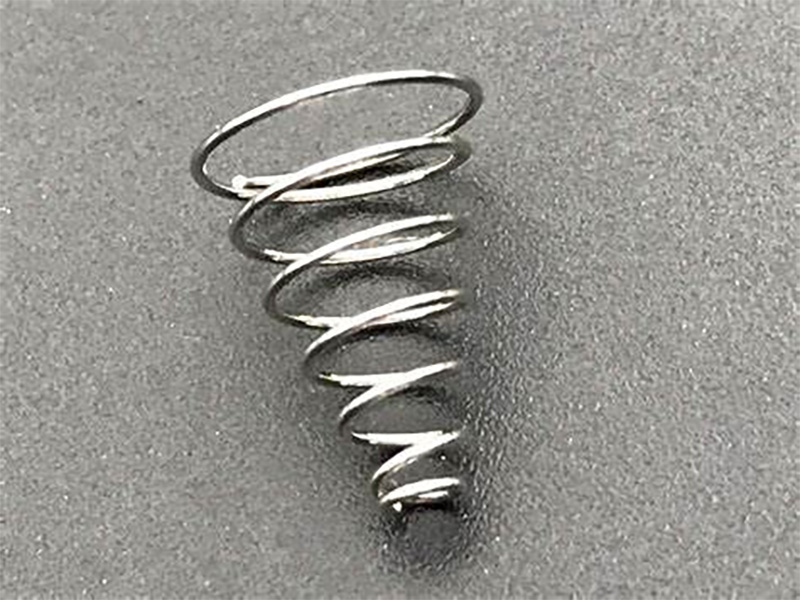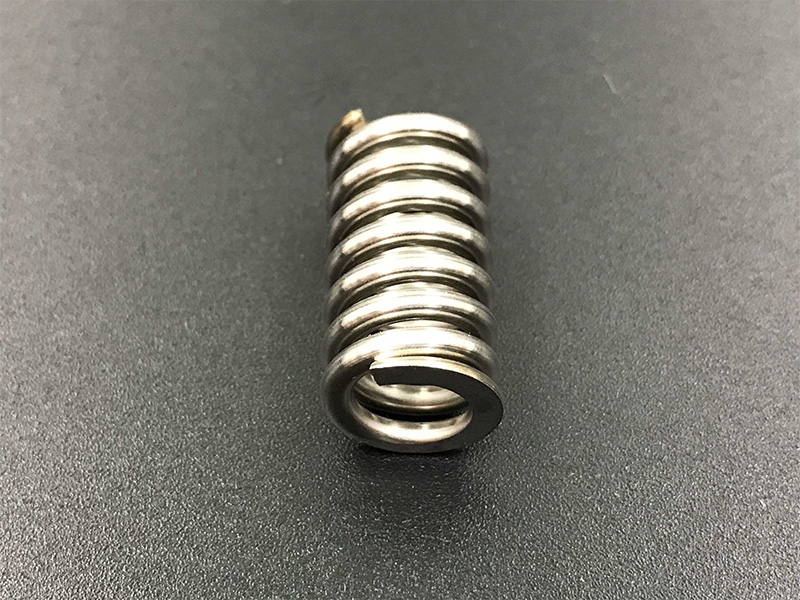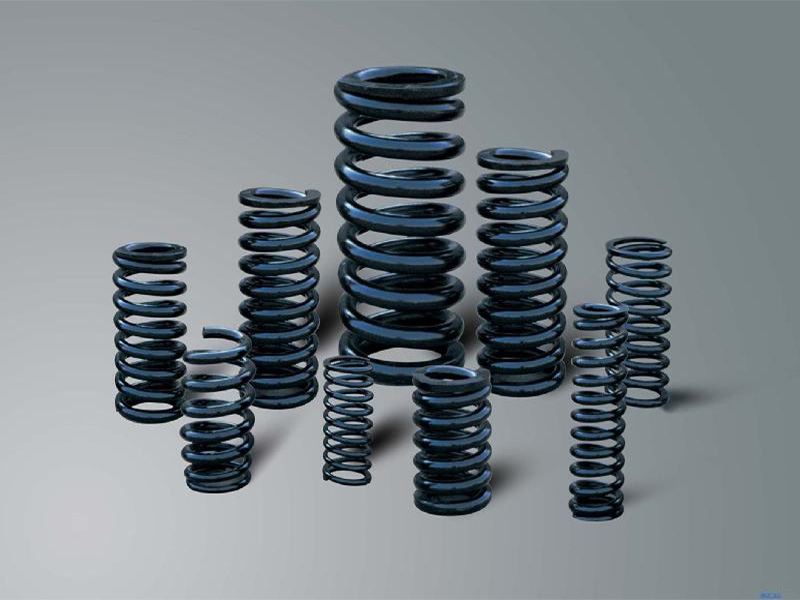

Spring steel is made of steel and non-iron metals, mostly steel. Raw material state bar material, silk material, sheet material and belt material; Some are in hot rolling, cold rolling, cold drawing after annealing, quenching tempering or bainite isothermal quenching state supply, made of spring steel and then the final heat treatment.

1.1 Annealing
In order to facilitate further cold drawing or cutting, softening annealing (spheroidizing annealing) is required for all kinds of round steel and hard steel wire used in hot forming spring steel, so as to reduce the hardness of the material, improve its cutting performance and enhance the ability of cold plastic deformation. Spring steel steel material annealing should be heated in a furnace with protective atmosphere to prevent serious oxidation decarbonization of the surface. The annealing structure should be spherical pearlite. The hardness is about 180HBW.
1.2 Normalizing
For some spring steels, such as automotive torsion bar spring steels, it is easy to cause uneven microstructure and property and large residual internal stress during hot working. By normalizing the spring steel, the steel structure can be uniform and fine, and the internal stress can be eliminated.

2.1 Quenching
During quenching and heating of spring steel, special attention should be paid to preventing surface decarbonization, overheating and over-burning, grain boundary oxidation and other defects. It must be heated in a heating furnace with protective atmosphere, or heated in the furnace after coating the spring steel with protective coating, and then cooled by water or oil according to the steel type.
For example, the corrugated spring steel washers with inner holes φ12 and φ16mm for automobiles are made of 65# and 70# steel instead of 65Mn in order to prevent hydrogen embrittleness. The technical requirements are 43-47HRC. Using equipment SY-805-4 muffle-free continuous mesh belt furnace production line, heating temperature 820℃±5℃, mesh belt rotation speed 35min, carbon potential control in 0.62%-0.65%; The tempering temperature is 410℃±10℃, and the oven is cooled with water. The hardness value is 43-45HRC. Precautions for operation: when loading the furnace, it is necessary to ensure uniform feeding and the height is 3-4 gasket thickness. Do not pile up too thick or scattered, resulting in uneven heating or overheating. Quench into the quick-quenching oil, do not open the mixer, in order to avoid excessive deformation. After tempering, it is cooled quickly with water to prevent the second kind of tempering brittleness.
Production has been widely used on martensite step quenching or bainite isothermal quenching, also can undertake bainite in isothermal quenching, the heat preservation time shorter, bainite transformation terminate the line has not been achieved, the part retained austenite, and then continue to cool to room temperature, make this part of the austenite into martensite, bainite and austenite in organizational combined body, on the performance of both high strength and good toughness, It’s a way to toughen things up. This process also requires a tempering process, which can only be applied to spring steels with small cross sections.

2.2 Tempering
The spring steel should be tempered in time after quenching, and the residence time after quenching should not be more than 4 hours, so as to prevent quenching cracking, improve plasticity and toughness, and reduce quenched internal stress. Tempering heating should be uniform, prone to the second kind of tempering brittle spring steel steel, after tempering should be quickly cooled.
2.3 Low temperature annealing (de-stress tempering)
Non-iron wires such as piano wire, cold drawn hard wire, stainless spring steel wire or phosphor bronze are usually cold formed spring steel materials. Quenched-tempered steel wire, deformable heat treated steel wire and heat treated steel strip are also cold formed spring steel materials. All kinds of spring steels wound with these materials have high internal stresses and must be annealed at low temperature (stress relief tempering) to remove the internal stresses generated during winding. The heating temperature of low temperature annealing (stress relief tempering) is generally below the recrystallization temperature, and after the appropriate time of heat preservation, the air cooling comes out of the oven. This can not only partially eliminate the internal stress in spring steel, stabilize the shape and size, but also effectively improve the mechanical properties, such as increasing hardness (2 ~ 3HRC), tensile strength, flexural ratio, elastic limit, fatigue resistance and stress relaxation resistance.
2.4 Precipitation hardening
Precipitation hardening process including alloy is heated to the phase transition point above, get some elements of supersaturated solid solution, and then quenching solution heat treatment, heat will spring steel and steel wire to alloy solubility curve above a certain temperature, the appropriate heat preservation time appropriately, supersaturated solid solution was deposited in uniform distribution of hard phase particles of aging treatment. This heat treatment method can make the spring steel achieve the desired strength and toughness of elasticity. The precipitated hardening materials used in spring steel manufacturing are 07Cr17Ni7Al (0Cr17Ni7Al), Be-Cu alloy, Fe-Ni based high elastic alloy, Ni73Cr15Fe7NbTi (LNConellX-750) and lnConell-718, etc.
2.5 Deformation heat treatment
The high temperature deformation heat treatment of 60Si2Mn and 55SiMnB steel plate spring steels can improve the strength and toughness and fatigue life of spring springs, and also improve the labor productivity of making spring springs, and reduce labor intensity and cost. The processing and manufacturing of spring steel of automobile steel plate is to bend the spring with pressure bending machine in the heating state, and quench it in oil in the bending state, and temper it at medium temperature.

For Further Details,Please Feel Free To Contact Us: